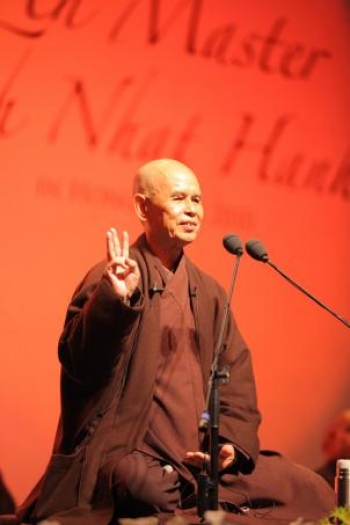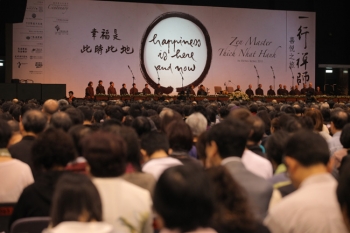After the attainment of the enlightenment the Buddha delivered the first sermon namely the discourse called the Setting in Motion the Wheel of Truth – (Dhammacakkappavattanasutta). This discourse, he delivered to his five old colleagues with whom he had spent a long period of his ascetic life prior to the attainment of enlightenment. This discourse therefore plays an extremely important role in the propagation of Buddhism. The Buddha in this sermon introduced four excellent truths which are not only practical but exceptionally significant. They are: problems of life, their causes, freedom from them and the way that leads to end the problems.
We all have problems in our life. Our problems may be physical, psychological, social, economical or even political. We all suffer from one or more of these problems. But the truth is that none of us want to experience it. Therefore we see people who are unable to carry on their lives with their problems and trying to commit suicide, taking various kinds of drugs etc. to get rid of these problems at least for a temporary period of time. But, most times that does not really work. Although for a short period of time they become free from the problems, once the effects of drugs and etc. are no more all the problems begin to arise all over again. Therefore, in this short essay I shall try to discuss the Buddha’s noble eight-fold path and how it helps us overcome all our problems and lead a happy life.
The noble eight-fold path is consisted of eight factors namely: right view, right thought, right speech, right action, right livelihood, right effort, right mindfulness and right concentration. It is very important to note that the whole path begins with the right view. The right view is very important because it is only the right view that can lead to the right destination, not otherwise. Therefore the Buddha says; “he sees no single factor so responsible for the suffering of living being as wrong view and no single factor so potent in promoting the good of living being as right view”. What is this right view?
Right view according to Buddhism is that our life is very short. Moreover, life is uncertain while death is certain. And everyone in the world wants to live a happy life, nobody wants suffering. Why, then, should I do anything that might cause unhappiness either to myself or to others? The idea is that, if in any case I create an environment conducive to unhappiness to others, in that case, it is not possible for me to lead a happy life. To develop this attitude, the Buddha asks every individual to constantly reflect on five objects of contemplations. The five contemplations are:
1. I am sure to become old, I cannot avoid aging,
2. I am sure to become ill, I cannot avoid illness,
3. I am sure to die, I cannot avoid death,
4. I must be separated and departed from all that is dear and beloved to me,
5. I am the owner of my actions, heir of my actions, actions are the womb (from which I am sprung), actions are my relations, and actions are my protection. Whatever actions I do good or bad, of these I shall become the heir.
Once an individual thus reflects automatically his behavior to oneself and to others change. Thus his thought, speech, action, and livelihood, which constitute the next four factors of the path, become constructive too. In other words whatever he does he does it for the happiness of himself and of others who might be affected by his actions.
Moreover, not only he acts positively and constructively but, he makes right effort to maintain his thoughts and actions to be proper at all time. And he practices mindfulness to watch over his actions and concentrate on whatever he does so that each of his action becomes perfect.
Thus when a person leads his life having a proper or right view regarding the life and existence, his thoughts, actions and livelihood become positive. With positive attitude towards life whatever he does brings happiness to both him and others. This is the way to happiness, says the Buddha.

















